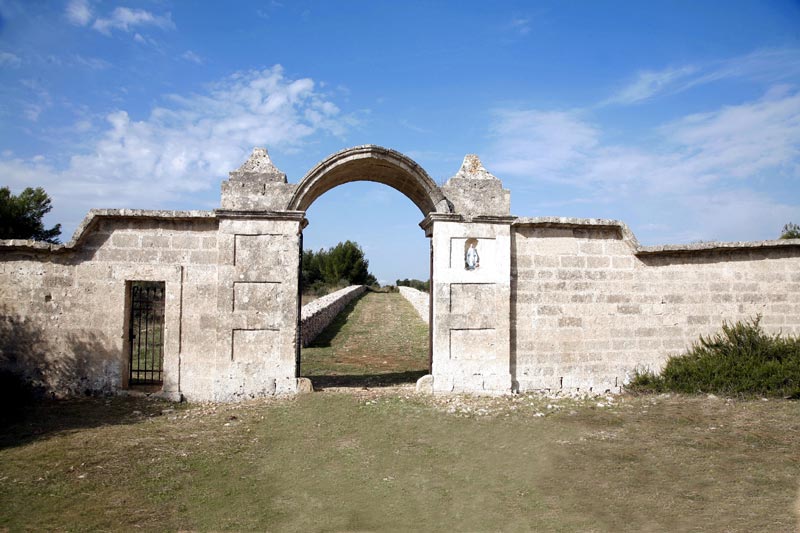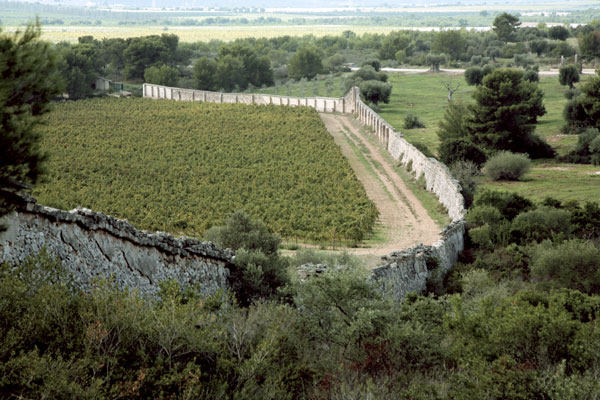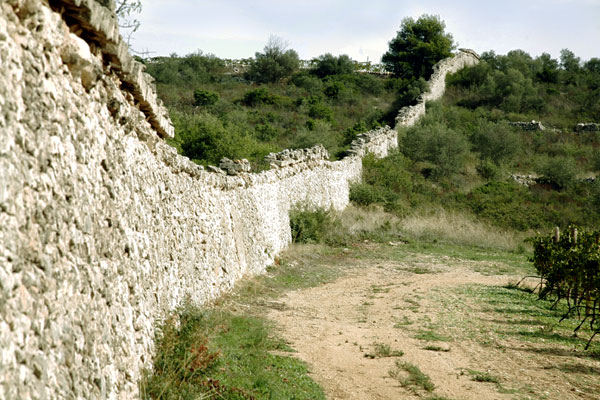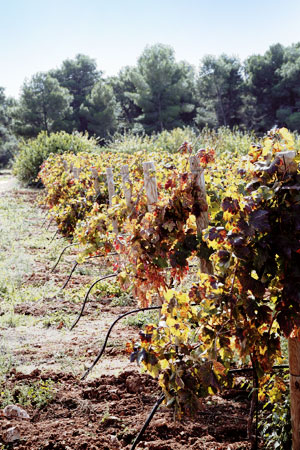TENUTA ACCETTA CACCIA RISERVATA
A HISTORY
Accetta Caccia Riservata has for centuries been the most desired place of relaxation for the wealthy. For centuries, it has survived in the shadow of the nearby Masseria Accetta farm. The Wine Estate began to shine on its own beginning only at the dawn of the new millennium, ending a long period of neglect and decay.
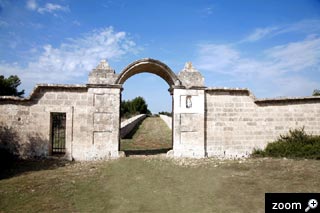 The rebirth began in the year 2000 with the purchase by the Biorima of 76 hectares, these being surrounded by a massive wall (chipped in several places). Where once deer and foxes once ran, there were only wastelands surrounded by woods, gorges, caves and ancient graves. The Biorima were able to see beyond this, and thus invested their resources and energy here. The goal was no less than to return the estate to its former glory. A decade of tireless work renewed this place full of history in its full charm and with a true gem: the lush vineyards. This is in the area of Statte (Puglia). It is considered the crossroads between the Magna Graecia and the Troglodyte civilization.
The rebirth began in the year 2000 with the purchase by the Biorima of 76 hectares, these being surrounded by a massive wall (chipped in several places). Where once deer and foxes once ran, there were only wastelands surrounded by woods, gorges, caves and ancient graves. The Biorima were able to see beyond this, and thus invested their resources and energy here. The goal was no less than to return the estate to its former glory. A decade of tireless work renewed this place full of history in its full charm and with a true gem: the lush vineyards. This is in the area of Statte (Puglia). It is considered the crossroads between the Magna Graecia and the Troglodyte civilization.
Never before used, this was a fertile and virgin land. It was ready to bear fruit because it was not torn from the bush by modern logging. The wide open areas cleared by the garbage seemed open wounds. Nearby the pine forest and the wood on the hills of Accetta Caccia Riservata still had a bright diamond green color. The Biorima began to embellish the estate without forcing nature in any way, but by simply following the natural dictates of the territory. The result is the blossoming of orange groves and orchards, and the prosperity of young and powerful vineyards and the production of an excellent wine. The biggest bet proved to be a winning one: each glass of red wine Antilupo contains the advantages of the unspoiled nature surrounding the vineyards.
ACCETTA CACCIA RISERVATA
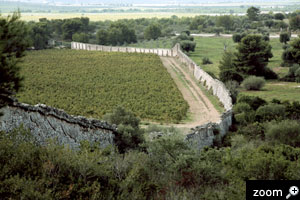 The Estate we admire today is the one developed during the nineteenth century. At that time, the increasingly aggressive use of land led to a deepening deforestation that did not spare the Masseria Accetta farm. In 1877 a law finally attempted to put a limit to this practice, but the owners at the time, the Cordiglia’s, were already pursuing the opposite direction. Even the most inaccessible corners went through stone clearance and were terraced.
The Estate we admire today is the one developed during the nineteenth century. At that time, the increasingly aggressive use of land led to a deepening deforestation that did not spare the Masseria Accetta farm. In 1877 a law finally attempted to put a limit to this practice, but the owners at the time, the Cordiglia’s, were already pursuing the opposite direction. Even the most inaccessible corners went through stone clearance and were terraced.
Salvation comes when hunting is transformed in a privilege for a small number of the rich. The area dedicated to the sport of the rich few has a surface of 150 tomoli (an older unit of land) surrounded by massive walls. Vegetation could grow and become a forest of tall trees in these lands, if excluded from grazing. Today everything has remained as it was then: there are olive groves at the top and the forest at the bottom. The “crown jewel” in which everything was preserved consists of kilometers of high walls, which represent a remarkable feat for that time. Meanwhile the important road that included the Estate begins has gone into disuse. There are innovative projects now planned that are designed to connect the areas more easily and directly. The imposing tree-lined avenue and the high walls are among the treasures that the passion of Biorima has been able to save. How as this done? By thinning out the vegetation in areas where nature had taken over. The road network of service that was based on this avenue of extraordinary beauty is now partially visible. Accetta Masseria occupied part of the public street leading from the Accetta farm to the Monte farm. The Biorima have also restored the monumental portals that gave access to several sheep tracks inside the hunting reserve. A little hunter’s house is located in a yard strewn with wild orchids. It consists of a single room with a fireplace and was built in the very highest point so as to dominate the estate.
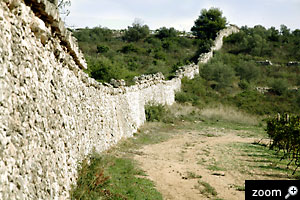 One of the most interesting aspects of the restoration started in 2000 regards about the so-called “anti-wolf wall.” The charming paths and alleys of the estate are still protected from unwanted incursions by the technique of self-moving ashlars. They were intentionally placed high on the walls without setting. Then they fall upon animals who venture to climb over to bite the game.
One of the most interesting aspects of the restoration started in 2000 regards about the so-called “anti-wolf wall.” The charming paths and alleys of the estate are still protected from unwanted incursions by the technique of self-moving ashlars. They were intentionally placed high on the walls without setting. Then they fall upon animals who venture to climb over to bite the game.
Biorima has restored the tank and the drinking troughs at the top of the clearing with the same care and attention. The final planning of the Accetta Caccia Riservata was established by an agreement dated in 1869. The avenue was divided in two sections: the widest was 120 tomoli and has retained its original name, while the narrowest was 30 tomoli and has become known as the Woods of St. Nicholas. The Biorima bought the estate in 2000 and its total property is 76 hectares, of which 15 are planted with vineyards.
OUR LOCATION
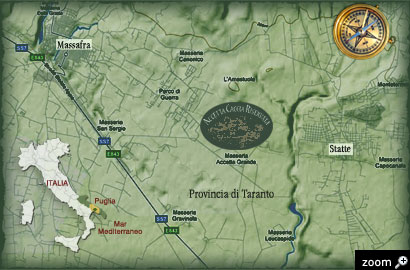 Accetta Caccia Riservata is located a few kilometers from Taranto, which was the capital of Magna Graecia. Not far from here we find Massafra and Statte, part of the area of the Gravine.
Accetta Caccia Riservata is located a few kilometers from Taranto, which was the capital of Magna Graecia. Not far from here we find Massafra and Statte, part of the area of the Gravine.
The history of this green and charming hunting area is parallel with that of the nearby farm Masseria Accetta. It was established in the feudal period in an area where man had settled thousands of years ago. The farm endured a period of maximum activity during the 17th century and then passed from hand to hand to the wealthy.
Let's step back millions of years. At the entrance of Accetta Caccia Riservata we find a small cave that is one of the funerary monuments of the Bronze Age. Here we are in the territory of the colony of Magna Graecia, of nearby Taranto, roughly around the year 700 B.C. Here was the residential settlement of Amastuola, and its big necropolis is still clearly visible near the Accetta Caccia Riservata. We know little about life in the caves of the Wine Estate because specific archaeological studies of it do no exist. During more modern centuries bandits found refuge here after having robbed on the nearby main roads.
To assume a meaning of the toponym Accetta we must go back to roughly the year 200 B.C. This, unfortunately, is the beginning of the disintegration of the Magna Graecia agricultural world, caused by the arrival of the Romans. They took away lands that were then given to Roman citizens, for a variety of reasons. One of them was the deduction of a colony. What do we mean by this? Romans first of all enacted a specific law. Then a committee set the orientation of the so-called centuriation in two main axes. The assignment took place with the draw among the settlers after various rituals which were also propitiatory. The Latin terms ‘sortes’ or ‘acceptae’ likely derive from the action of accepting the plot of land, and from it the origin probably of the toponym Accetta.
The system of caves and tombs within the Wine Estate is part of a medieval settlement. Knowledge of it should increase soon because Biorima shows detailed attention to local history. The first step is to carefully maintain access to the gorges and caves. They have been covered to date with impenetrable vegetation. The intense life of what will become a large hunting reserve continues through the ages. There will certainly be a constant struggle between progress and nature (forests may disappear), between cereal crops and olive trees and Mediterranean scrub, and between shepherds and brigands.
A WALK THROUGH NATURE
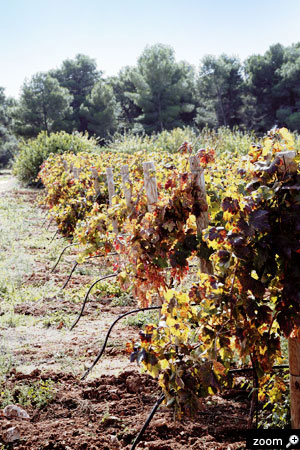 The green corolla that stands on top of the Accetta Caccia Riservata’s Wine Estare is precious Aleppo pine. It climbs up from dried and sunny sides of gorges and small canyons.
The green corolla that stands on top of the Accetta Caccia Riservata’s Wine Estare is precious Aleppo pine. It climbs up from dried and sunny sides of gorges and small canyons.
The Mediterranean vegetation lives here in natural freedom and has dominated the landscape for centuries. Large clumps of arbutus, rosemary, juniper and nearly-extinct carob trees unequivocally characterize the scents that permeate the air in the Accetta Caccia Riservata. Busy bees are like tireless messengers of these olfactory emotions. They have brought this touch of Mediterranean bouquet to grapes, from flower to flower through pollination of vineyards. The uneasy task of preserving the essences has been entrusted to the skill of man through a skilful winemaking.
We could dwell on that reservoir of biodiversity that Tenuta Accetta Caccia Riservata preserves. Let’s look at some of the Mediterranean species we find in the site, carob and arbutus trees. Their flavors are immediately evident when one tastes Antilupo red wine. Unfortunately, the carob tree is starting to disappear, but at Accetta Caccia Riservata it abounds due to wide orange groves. Carob flour is a chocolate substitute flavoring, and its delicate hints can be found in Antilupo red wine due to the high percentage of Primitivo grapes.
In the natural paradise preserved by Biorima we can also enjoy the arbutuses: an explosion of scarlet and strawberry flavors. Here they are considered as the “chocolate of poor people” for their characteristic taste. Arbutus is one of the more peculiar tastes we find in Antilupo red wine.

 A HISTORY
A HISTORY THE WINE ESTATE
THE WINE ESTATE OUR LOCATION
OUR LOCATION THE NATURE
THE NATURE